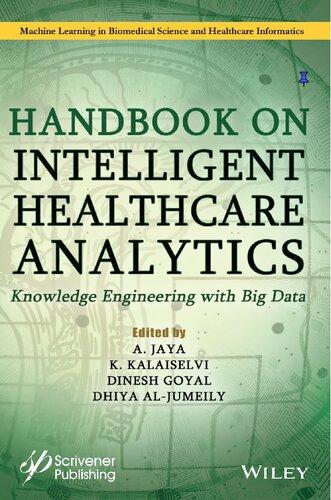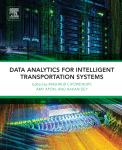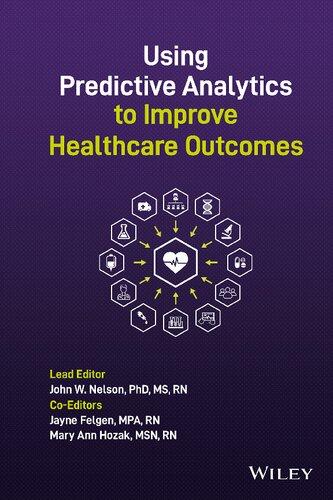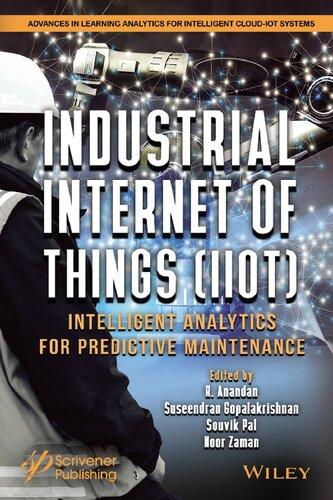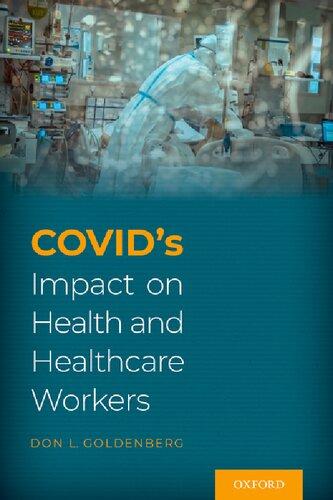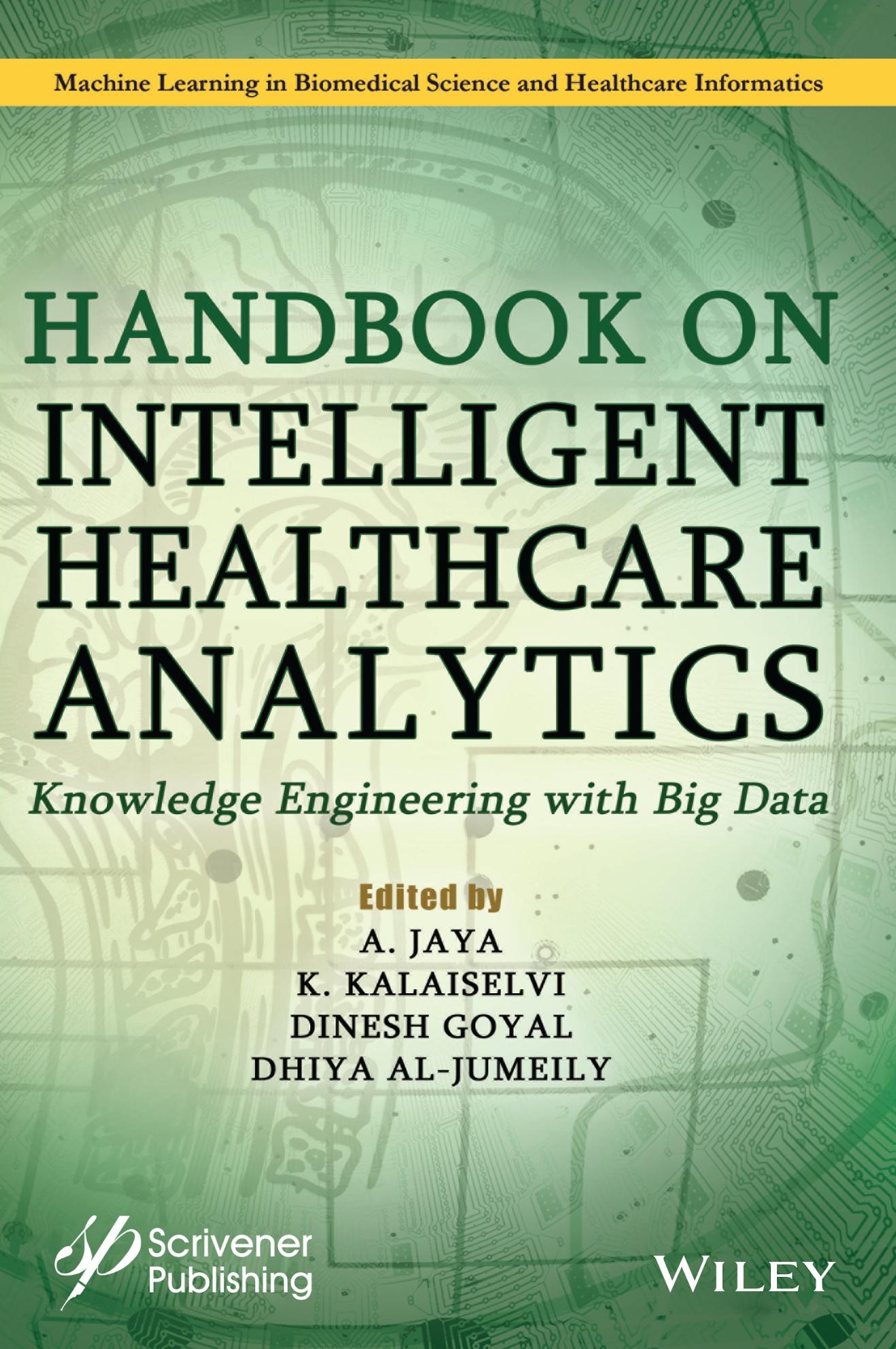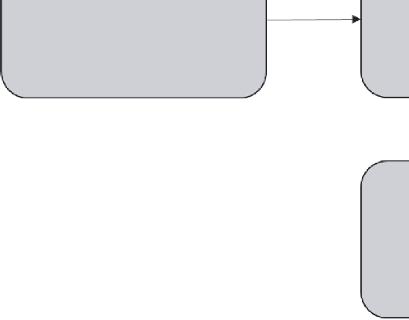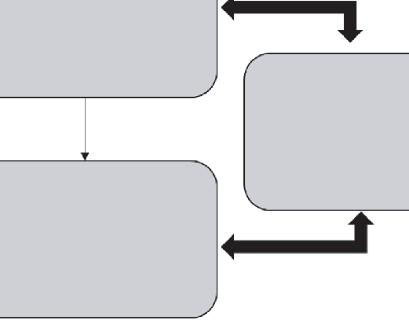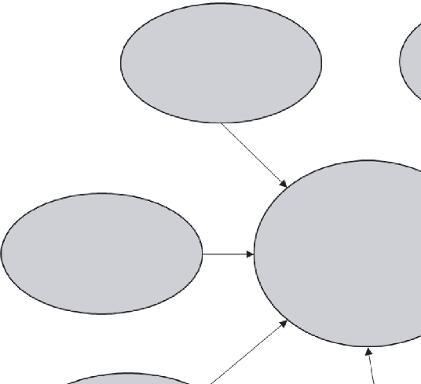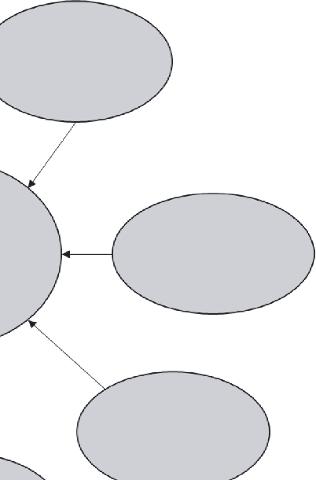Knowledge Engineering with Big Data Analytics
Edited by A. Jaya
Department of Computer Application, B.S. Abdur Rahman Crescent Institute of Science, Technology, Chennai, India
K. Kalaiselvi
Department of Computer Science, Vels Institute of Science, Technology and Advanced Studies, Chennai, India
Dinesh Goyal
Poornima Institute of Engineering & Technology, Jaipur, India and
Dhiya AL-Jumeily
Faculty of Engineering and Technology, Liverpool John Moores University, UK
This edition first published 2022 by John Wiley & Sons, Inc., 111 River Street, Hoboken, NJ 07030, USA and Scrivener Publishing LLC, 100 Cummings Center, Suite 541J, Beverly, MA 01915, USA © 2022 Scrivener Publishing LLC
For more information about Scrivener publications please visit www.scrivenerpublishing.com.
All rights reserved. No part of this publication may be reproduced, stored in a retrieval system, or transmitted, in any form or by any means, electronic, mechanical, photocopying, recording, or otherwise, except as permitted by law. Advice on how to obtain permission to reuse material from this title is available at http://www.wiley.com/go/permissions.
Wiley Global Headquarters
111 River Street, Hoboken, NJ 07030, USA
For details of our global editorial offices, customer services, and more information about Wiley products visit us at www.wiley.com.
Limit of Liability/Disclaimer of Warranty
While the publisher and authors have used their best efforts in preparing this work, they make no representations or warranties with respect to the accuracy or completeness of the contents of this work and specifically disclaim all warranties, including without limitation any implied warranties of merchantability or fitness for a particular purpose. No warranty may be created or extended by sales representatives, written sales materials, or promotional statements for this work. The fact that an organization, website, or product is referred to in this work as a citation and/or potential source of further information does not mean that the publisher and authors endorse the information or services the organization, website, or product may provide or recommendations it may make. This work is sold with the understanding that the publisher is not engaged in rendering professional services. The advice and strategies contained herein may not be suitable for your situation. You should consult with a specialist where appropriate. Neither the publisher nor authors shall be liable for any loss of profit or any other commercial damages, including but not limited to special, incidental, consequential, or other damages. Further, readers should be aware that websites listed in this work may have changed or disappeared between when this work was written and when it is read.
Library of Congress Cataloging-in-Publication Data
ISBN 978-1-119-79179-9
Cover image: Pixabay.Com
Cover design by Russell Richardson
Set in size of 11pt and Minion Pro by Manila Typesetting Company, Makati, Philippines
5.3.2
6.4.1
6.4.3
6.4.4
6.4.5
6.4.6
6.4.7
9.2.4
G. Jaculine Priya and S. Saradha
Preface
The power of healthcare data analytics is being increasingly used in the industry. With this in mind, we wanted to write a book geared towards those who want to learn more about the techniques used in healthcare analytics for efficient analysis of data. Since data is generally generated in enormous amounts and pumped into data pools, analyzing data patterns can help to ensure a better quality of life for patients. As a result of small amounts of health data from patients suffering from various health issues being collectively pooled, researchers and doctors can find patterns in the statistics, helping them develop new ways of forecasting or diagnosing health issues, and identifying possible ways to improve quality clinical care. Big data analytics supports this research by applying various processes to examine large and varied healthcare data sets. Advanced analytics techniques are used against large data sets to uncover hidden patterns, unknown correlations, market trends, customer preferences, and other useful information. This book covers both the theory and application of the tools, techniques and algorithms for use in big data in healthcare and clinical research. It provides the most recent research findings to derive knowledge using big data analytics, which helps to analyze huge amounts of real-time healthcare data, the analysis of which can provide further insights in terms of procedural, technical, medical, and other types of improvements in healthcare. In addition, this book also explores various sources of personalized healthcare data.
For those who are healthcare researchers, this book reveals the innovative hybrid machine learning and deep learning techniques applied in various healthcare data sets. Since machine learning algorithms play a major role in analyzing the volume, veracity and velocity of big data, the scope of this book focuses on various kinds of machine learning algorithms existing in the areas such as supervised, unsupervised, semi-supervised, and reinforcement learning. It guides readers in implementing the Python environment for machine learning in various application domains. Furthermore, predictive analytics in healthcare is explored, which can help to detect
early signs of patient deterioration from the ICU to a general ward, identify at-risk patients in their homes to prevent hospital readmissions, and prevent avoidable downtime of medical equipment.
Also explored in the book are a wide variety of machine learning techniques that can be applied to infer intelligence from the data set and the capabilities of an application. The significance of data sets for various applications is also discussed along with sample case studies. Moreover, the challenges presented by the techniques and budding research avenues necessary to see their further advancement are highlighted.
Patient’s healthcare data needs to be protected by organizations in order to prevent data loss through unauthorized access. This data needs to be protected from attacks that can encrypt or destroy data, such as ransomware, as well as those attacks that can modify or corrupt a patient’s data. Security is paramount since a lot of devices are connected through the internet of things and serve many healthcare applications, including supporting smart healthcare systems in the management of various diseases such as diabetes, monitoring heart functions, predicting heart failure, etc. Therefore, this book explores the various challenges for smart healthcare, including privacy, confidentiality, authenticity, loss of information, attacks, etc., which create a new burden for providers to maintain compliance with healthcare data security.
In addition to inferring knowledge fusion patterns in healthcare, the book also explores the commercial platforms for healthcare data analytics. The new benefits that healthcare data analytics brings to the table, run analytics and unearth information that could be used in the decision-making of practitioners by providing insights that can be used to make immediate decisions. Also investigated are the new trends and applications of big data analytics for medical science and healthcare. Healthcare professionals, researchers, and practitioners who wish to figure out the core concepts of smart healthcare applications and the innovative methods and technologies used in healthcare will all benefit from this book.
Editors
Dr. A. Jaya
Dr. K. Kalaiselvi*
Dr. Dinesh Goyal
Prof. Dhiya AL-Jumeily
*Corresponding Editor
An Introduction to Knowledge Engineering and Data Analytics
D. Karthika*
and K. Kalaiselvi†
Department of Computer Applications, Vels Institute of Science, Technology & Advanced Studies (Formerly Vels University), Chennai, Tamil Nadu, India
Abstract
In recent years, the philosophy of Knowledge Engineering has become important. Information engineering is an area of system engineering which meets unclear process demands by emphasizing the development of knowledge in a knowledge-based system and its representation. A broad architecture for knowledge engineering that manages the fragmented modeling and online learning of knowledge from numerous sources of information, non-linear incorporation of fragmented knowledge, and automatic demand-based knowledge navigation. The project aims to provide petabytes in the defined application domains with data and information tools. Knowledge-based engineering (KBE) frameworks are based on the working standards and core features with a special focus on their built-in programming language. This language is the key element of a KBE framework and promotes the development and re-use of the design skills necessary to model complex engineering goods. This facility allows for the automation of the process preparation step of multidisciplinary research (MDA), which is particularly important for this novel. The key types of design rules to be implemented in the implementation of the KBE are listed, and several examples illustrating the significant differences between the KBE and the traditional CAD approaches are presented. This chapter discusses KBE principles and how this technology will facilitate and enable the multidisciplinary optimization (MDO) of the design of complex products. This chapter discusses their reach goes beyond existing CAD structure constraints and other practical parametric and space exploration approaches. There is a discussion of the concept of KBE and its usage in architecture that supports the use of MDO. Finally, this chapter discusses on the key measures and latest trends in the development of KBE.
*Corresponding author: d.karthi666@gmail.com
†Corresponding author: kalairaghu.scs@velsuniv.ac.in
A. Jaya, K. Kalaiselvi, Dinesh Goyal and Dhiya Al-Jumeily (eds.) Handbook of Intelligent Healthcare Analytics: Knowledge Engineering with Big Data Analytics, (1–20) © 2022 Scrivener Publishing LLC
Keywords: Data analytics, knowledge, knowledge engineering, principles, knowledge acquisition
1.1 Introduction
1.1.1 Online Learning and Fragmented Learning Modeling
Applied artificial intelligence (AI) was defined as knowledge engineering [1], with three major scientific questions: knowledge representation, the use of information, and the acquisition of knowledge. In the big data age, the three fundamental problems must evolve with the basic characteristics of the complex and evolving connections between data objects, which are autonomous sources of information. Big data not only rely on domain awareness but also distribute knowledge from numerous information sources. To have knowledge of engineering tools for big data, we need tons of experience. Three primary research issues need to be addressed for the 54-month, RMB 45-million, 15-year Big Data Knowledge Engineering (BigKE) project sponsored by China’s Ministry of Science and Technology and several other domestic agencies: 1) online learning and fragmented learning modeling; 2) nonlinear fusion of fragmented information; and 3) multimedia fusion of knowledge. Discussing these topics is the main contribution of this article. With 1), we examine broken information and representation clusters, immersive online content learning with fragmented knowledge, and simulation with spatial and temporal characteristics of evolving knowledge. Question 2) will discuss connections, a modern pattern study, and dynamic integration between skills subsections of fragmented information. The key issues mentioned in Figure 1.1 will be collaborative, context-based computing, information browsing, route discovery, and the enhancement of interactive knowledge adaptation.

Figure 1.1 Knowledge engineering.
Due to these features of several channels, traditional offline data mining methods cannot stream data since it is important to reform the data. Online learning methods help solve this issue and adapt easily to the drift of the effects of streaming. But typical methods to online learning are explicitly configured for single-source info. Thus, the maintenance of these features concurrently provides great difficulties and opportunities for large-scale data production. Big data starts with global details, tackles dispersed data like data sources and function streams, and integrates diverse understanding from multiple data channels, as well as domain experience in personalized demand-driven knowledge services. In the age of big data, many data sources are usually heterogeneous and independent and require evolving, complex connections among data objects. These qualities are considered by substantial experience. Meanwhile, major suppliers of information provide personalized and in-house demand-driven offerings through the usage of large-scale information technologies [2].
Centered on the characteristics of multiple data sets, the key to a multisource retrieval of information is fragmented data processing [3]. To create global awareness, local information pieces from individual data points can be merged. Present online learning algorithms often use linear fitting for the retrieval of dispersed knowledge from local data sources [4]. In the case of fragmented knowledge fusion, though, linear fitting is not successful and may even create problems of overfitting. Several studies are ongoing to improve coherence in the processing and interpretation of fragmented knowledge [6], and the advantage of machine learning for large data interpreting is that most samples are efficient, thus eliminating the possibility of over-adjustment at any rate [7]. Big data innovation acquires knowledge mostly from user-produced content, as opposed to traditional information engineering’s focused on domain experience, in addition to authoritative sources of knowledge, such as technical knowledge bases. The content created by users provides a new type of database that could be used as a main human information provider as well as to help solve the problem of bottlenecks in traditional knowledge engineering. The information created by the consumer is broad and heterogeneous which leads to storage and indexing complexities [5], and the knowledge base should be able to build and disseminate itself to establish realistic models of data relations. For instance, for a range of reasons, clinical findings in survey samples can be incomplete and unreliable, and preprocessing is needed to improve analytical data [8].
Both skills are essential for the creation of personalized knowledge base tools as the knowledge base should be targeted to the needs of individual users. Huge information reinforces distributed expertise to develop any ability. Big data architecture also requires a customer interface to overcome user-specific problems. With the advent of science and innovations, in the fast-changing knowledge world of today, the nature of global economic growth has changed by introducing more communication models, shorter product life cycles, and a modern product production rate. Knowledge engineering is an AI field that implements systems based on information. Such structures provide computer applications with a broad variety of knowledge, policy, and reasoning mechanisms that provide answers to real-world issues. Difficulties dominated the early years of computer technology. Also, knowledge engineers find that it is a very long and expensive undertaking to obtain appropriate quality knowledge to construct a reliable and usable system. The construction of an expert system was identified as a knowledge learning bottleneck. This helped to gain skills and has been a big area of research in the field of information technology.
The purpose of gathering information is to create strategies and tools that make it as simple and effective as possible to gather and verify a professional’s expertise. Experts tend to be critical and busy individuals, and the techniques followed would also minimize the time expended on knowledge collection sessions by each expert. The key form of the knowledge-based approach is an expert procedure, which is intended to mimic an expert’s thinking processes. Typical examples of specialist systems include bacterial disease control, mining advice, and electronic circuit design assessment. It currently refers to the planning, administration, and construction of a system centered on expertise. It operates in a broad variety of aspects of computer technology, including data baselines, data collection, advanced networks, decision-making processes, and geographic knowledge systems. This is a big part of software computing. Wisdom engineering also falls into connection with mathematical reasoning as well as a strong concern with cognitive science and social-cognitive engineering, where intelligence is generated by socio-cognitive aggregates (mainly human beings) and structured according to the way humans thought and logic operates. Since then, information engineering has been an essential technology for knowledge incorporation. In the end, the exponentially increasing World Wide Web generates a growing market for improved usage of knowledge and technological advancement.
1.2 Knowledge and Knowledge Engineering
1.2.1
Knowledge
Knowledge is characterized as abilities, (i) which the person gains in terms of practice or learning; theoretical or practical knowledge of a subject; (ii) what is known inside or as a whole; facts and information; or (iii) knowing or acquainted with the experience of life or situation. This knowledge is defined accordingly. The retrieval of information requires complex cognitive processes including memory, understanding, connectivity, association, and reasoning. Knowledge of a subject and its capacity for usage for a specific purpose are also used to suggest trustworthy comprehension. Information may be divided into two forms of knowledge: tacit and clear. Tacit knowledge is the awareness that people have and yet cannot get. Tacit knowledge is more relevant since it gives people, locations, feelings, and memories a framework. Efficient tacit information transfer typically requires intensive intimate correspondence and trust. The tacit understanding is not easily shared. Still, consciousness comprises patterns and culture that we still cannot comprehend. On the other hand, information, which is easy to articulate, is called explicit knowledge. Coding or codification is the tool used to translate tacit facts into specific details. The awareness expressed, codified, and stored in such media is explicitly facts. Explicit information. The most common simple knowledge sources are guides, manuals, and protocols. Audio-visual awareness may also be an example of overt intelligence, which is based on the externalization of human skills, motivations, and knowledge.
1.2.2 Knowledge Engineering
Edward Feigenbaum and Pamela McCorduck created Knowledge Engineering in 1983: To address difficult issues that typically need a great deal of human experience in the fields of engineering, knowledge engineering needs the integration of information of computer systems. In engineering, design information is an essential aspect. If the information is collected and held in the knowledge base, important cost and output gains may be accomplished. In a range of fields, information base content may be used as to reuse information in other ways for diverse goals, to employ knowledge to create smart systems capable of carrying out complicated design work. We shall disseminate knowledge to other individuals within an organization.
While the advantages of information capture and usage are obvious, it has long been known in the AI world that knowledge is challenging to access from specialists. Second, the specialists do not remember and describe “tacit knowledge” effectively, and this operates subconsciously and, where it is not impossible, is difficult to overcome the problems arising from several subject matters that they learn. To elaborate, they have to know what it is called. Third, there are various prospects and points of view which include aggregation to provide a coherent view. Last, professionals create abstract concepts and shortcuts for which they cannot communicate. The area of information technology was created some 25 years ago to address such problems, and the role of the knowledge engineer was born. Since then, computer engineers have developed a variety of principles, methods, and tools that have improved the acquisition, use, and implementation of knowledge considerably.
1.3 Knowledge Engineering as a Modelling Process
There is also a consensus that the KBS construction approach may be used as a modeling operation. It is not intended to construct a cognitively appropriate model, but to build a model that offers similar results for problemsolving problems in the area of concern as seen in Figure 1.2.
Figure 1.2 Knowledge as modelling process.
Building a KBS requires building a programming model to acquire problem-solving capabilities like those of a domain specialist. This material is not directly available; therefore, it needs to be created and arranged.
1.4 Tools
Intelligence engineers make the more efficient and less bogus use of dedicated computational tools for the acquisition, simulation, and handling of intelligence. PC PACK is a versatile compilation of this programmed, commercially available as a package of knowledge technology tools that are designed to be tested on a wide range of projects. The aim is to consider the key characteristics of the domain. The method simulates how anyone should label a text page with different colors such as green for suggestions and yellow for attributes. The labeled text would immediately be placed in the PCPACK database to be applied to all other resources when the user has highlighted a document. The MOKA and Popular KADS Methodologies are supported by the CFPACK. It is also fully compliant with information engineering approaches and techniques. The CFPACK is a software suite that includes the following
(i) Protocol tool: It enables the discovery, recognition, and definition of interview transcripts, conclusions, and documentation that may be included in the knowledge base.
(ii) Ladder Tool: This allows hierarchies of knowledge elements such as meanings, features, procedures, and specifications to be developed.
(iii) Chart Tool: This allows users to build mobile networks of connections between data elements, such as process maps, maps of ideas, and cutting-edge diagrams.
(iv) Matrix Tool: This allows grids that show the connection and attributes of the elements to be developed and edited.
(v) Annotation tools: This facilitates the creation of sophisticated HTML annotations, with links to other sites and other knowledge templates automatically generated in the CFPACK.
(vi) Tool publisher: This allows the creation from a knowledge base of a website or some other information resource using a model-driven approach to optimize re-usability. MOKA, CommonKADS, and the 47-step protocol provide approaches to run a project from beginning to completion, as well as maintaining best practice.
1.5 What are KBSs?
A knowledge-based framework is a system that utilizes AI tools in problemsolving systems to assist human decision-making, understanding, and intervention.
There are two core components of the KBSs:
• Information base (consists of a collection of details and a set of laws, structures, or procedures).
• Inference engine (Responsible for the extension of the information base to the issue at hand).
In contrast to human expertise, there are pros and cons to utilizing KBSs.
1.5.1 What is KBE?
It starts with a discussion about what KBE is in this book and begins with a simple definition: Knowledge-based Engineering (KBE) uses the knowledge of product and operation, which was collected and retained in specific software applications, to enable its direct usage and reuse in the development of new products and variants. KBE’s implementation consists of applying a specific class of computing tools, called the KBE systems, which enable engineers to acquire and reuse engineering knowledge using methods and methodologies. The name of the KBE architecture is derived from the mixture of KBS and engineering, which are one of the major outcomes of AI. In the 1970s, KBE systems demonstrate the advancement of the KBS by applying the special engineering industry requirements. KBE systems combine KBS rule-based logic technologies with engineering data analysis and geometry like CAD.
For these reasons, a traditional KBE architecture provides the user with a programming language that is generally object-oriented and one (something more) embedded or closely connected CAD engine. The vocabulary of programming enables the user to capture and reuse rules and procedures in engineering, while the object-oriented approach of design corresponds well with how engineers see the world: systems abstract assets of objects, defined by parameters and behaviors, linked by relationships. Access and management by the programming language of the CAD engine meet the geometry handling requirements characteristic of the engineering architecture. The MIT AI laboratories and the Computer Vision CAD Group
developed the first commercially available KBE system named ICAD1984 (now PTC). Fortunately, this asks the first inquiry you will hear in Figure 1.3 about KBE.
It will be useful at this stage to quickly clarify what we refer to as information and how we use this term to describe concepts other than data and evidence. Both terms are sometimes misused in the traditional spoken language; truth and knowledge are often interchangeably used. The hierarchy of data and intellect (and knowledge) is the subject of long-term disputes between epistemologists and IT experts. Since this subject goes well beyond the scope of this chapter, this is our definition of data. Data are objects that have no meaning before they are put in form like symbols, statistics, digits, and indications. The information consists of important processed data. The context in which the data are collected gives it meaning, importance, and intent. Human and electronic information can be collected, shared, and processed. The knowledge is encrypted by code, normally organized in a structure or size, and stored in hard or soft media to accomplish this. Awareness is the condition of information and awareness processing, which requires the chance to act.
New information may be produced as a result of the application of knowledge. The IGES file with a geometrical definition of the surface as a piece of information is an example of this. IGES files will be encoded with numbers and symbols (i.e., data) and will only provide knowledge useful if they understand the meaning (i.e., the fact they are the data of an
Figure 1.3 KBE.
IGES file). The information which can be collected with a KBE method is regarded as a simple example of the algorithm that reads such an IGES file, reconstructs a specified surface model, intersects it with a floor plane, and, if the crossroad is non-zero, calculates the length of the corresponding curve. It is also sensible to ask why geometry varies from the standard CAD paradigm and enables the creation and manipulation of geometry. Owing to the varying scopes of these systems, the differences are important. Digitized drawing systems, which allow programmers to catch their ideas have been designed to create CAD systems. They build and store the results using the CAD framework’s geometry simulation functions. A set of points, lines, planes, and solids with reference and note are an almost all-inclusive link to the structure. These data provide enough information for the creation of a system that can be used to build a specification by production engineers. In doing so, creators store the specifics of “what,” but they retain the “how” and “why.” In a sense, the CAD approach can be considered a system “posterior,” because before it can be moved to the system it is necessary to know what the principle is like. It can be argued that CAD is geometry or drawing/drawing engineering to distinguish this approach from KBE.
KBE-supported technology is different. Technology Instead of shifting “what,” engineering experts are trying to move “how” and “why,” encapsulating in the KBE process knowledge and thinking instead of geometry in the CAD framework. Not only does this work by manipulating geometric structures, but programming is needed rather than writing. The “how” and “why” in engineering are in some cases used in textbooks, databases, tip sheets, and several other outlets. Much of the knowledge is held up by engineers, mostly in a manner that is strongly compiled and not specifically suitable for translation to the KBE procedure. This experience should be sufficiently transparent to create a KBE program to be codified into a software application capable of producing all kinds of product specifics, including geometry templates, scores, and data that are not associated with the geometry. Because of its capacity to generate a specification rather than simply text, it is widely referred to as a generative model.
1.5.2 When Can KBE Be Used?
How easy is the use of KBE? It is only necessary to rapidly generate different configurations and variants of a given variable. In certain practical cases, this is not essential, so it may be a wrong expenditure to try to clarify details and program a KBE system. One-off prototypes and designs that
